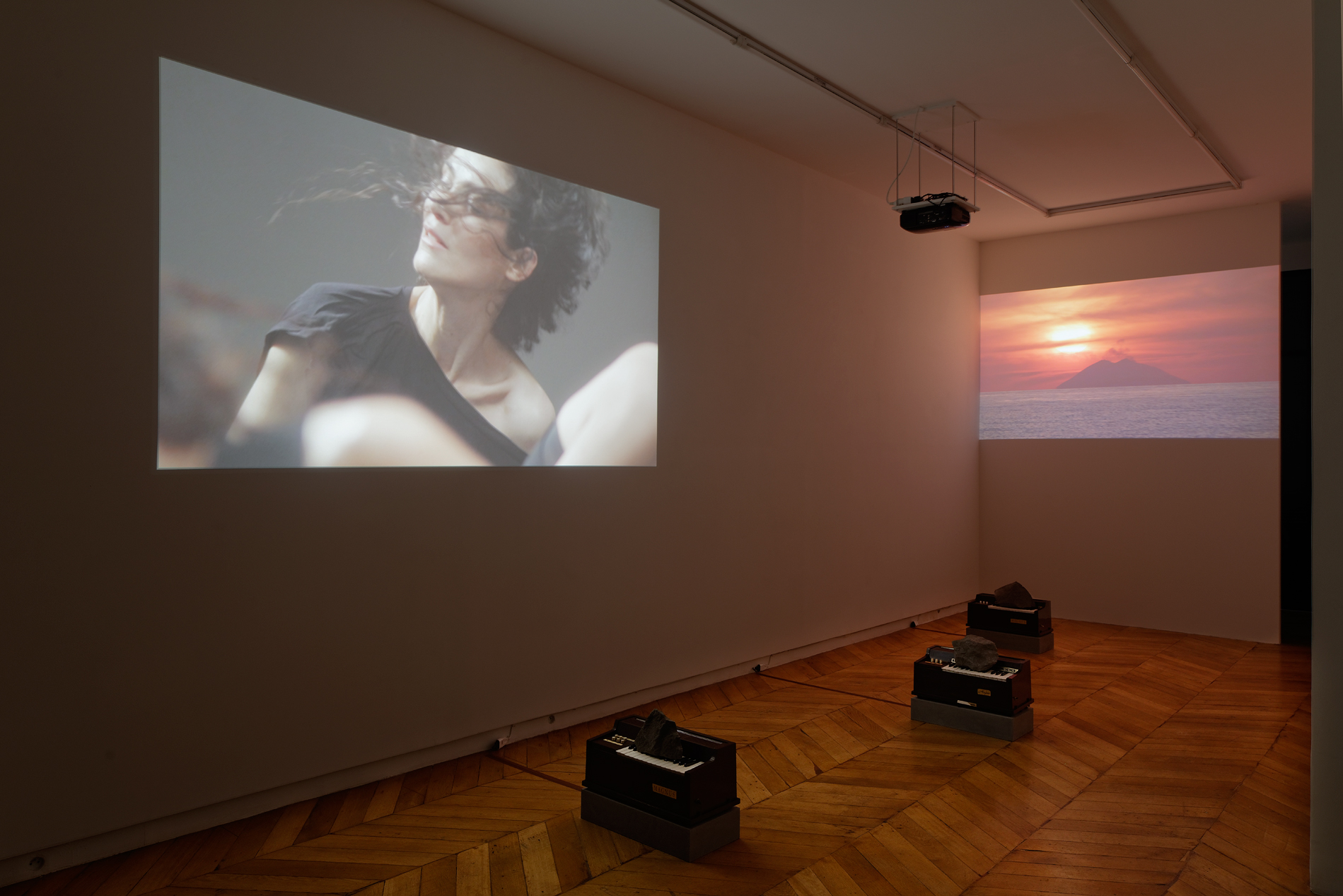Angelica Mesiti sets “An Ocean of Air” in motion
©Angelica Mesiti. Commissioned by Carriageworks Sydney for the project 24 Frames Per Second 2015. Advisor / choreographer: Saâdia Souyah Dancers: Saâdia Souyah Mariem Guellouz Akila Boutaleb Karima Aouraghe Crew Producer: Anne Becker Cinematograhper: Pierre Jouvion Camera assistant: Benjamin Masset Sound recordist: Marc Parazon Editing: Angelica Mesiti Colourist: Jean-Marie Belloteau Acknowledgements: Arab Centre for Dance and Contemporary Writing Paris, Felix Media
From this transcultural montage emerges an aesthetic of existence, which reveals the phenomenology of our orchestrated bodies...
I.
We are right at the beginning, you see.
As if before everything. With
a thousand and one dreams behind us and
without act.
II.
I can think of no knowledge more sacred
than this:
That you must become one who begins.
One who writes the first word behind a
century-long
dash.
Rainer Maria Rilke
A wave of sound undulates through the Galerie Allen, in Paris. These uninterrupted notes come from a small island — a sculpture, Untitled (Sound Sculpture) — made up of three “prepared” miniature harmoniums. On the keyboard of each instrument the artist has placed a piece of Volvic lava, with the stones’ innately uneven surfaces pressing down on a series of random notes to create an atonal motif, generating a discordant sound. The result is similar to that of a ritournelle, where the repetitive, hypnotic harmonies evoke a drone music effect.
On the adjacent walls, two silent videos are projected. First, In the Mouth of the Tyrant, which follows the slow descent of the sun setting into the crater of the still-smoking Mount Stromboli — a phenomenon that occurs once a year, around August 15. Then, the exaltant Nakh Removed, which examines the rite of the “hair dance,” a ritual in Berber culture where the repeated rocking of the head and body are reputed to send the dancer into a trance. Here, the dance has been (re)appropriated by five Parisian women of Algerian, Moroccan and Tunisian origin.
From this transcultural montage emerges an aesthetic of existence, which reveals the phenomenology of our orchestrated bodies. These body-instruments are transported by “the very idea of a chorus and of the melody of things, the articulation between solitude and community, a sort of echo of Nietzsche’s reflections on the Apollonian and the Dionysian.” There is also a similarity with the notion of wajd: the quest to find the deepest sense of being or to connect intimately with the moment.
In Angelica Mesiti’s work, the space between the self and the Other becomes an experiential vehicle, with the protagonist as both transmitter and receiver, the whole taking place in a heterotopic space. This is a recurrent theme for the artist. Take, for example, Rapture, Citizens Band, The Calling, or equally In the Ear of the Tyrant, all of which illustrate the artist’s interest in notions of identity and performance, within the context of a kind of “altermodernity.” More particularly, there is a focus on the unquantifiable social role played by music — and, by extension, sound in general — in our relationship with the world.
In Noise: The Political Economy of Music, Jacques Attali reminds us of music’s power to (re)define society, to indicate boundaries or even to mark out personal territory. He notes that without music there can be no freedom. According to Attali, music has the ability to transport us beyond ourselves and others, to bypass norms and rules, to give us an idea, even a fleeting one, of transcendence.
Meanwhile, the philosopher Jean-Luc Nancy invites us to imagine “a world where multiplicity and singularity coexist. A world where there is no longer a place for right and wrong, or endings, or provenance, or destination, yet which we must still consider as a world, as a sum of all the senses.” In other words, the world as a potentiality, the world in a constant state of creation. It appears that it is from this world that Mesiti explores matter and reveals forms.
Under the discreet touch of Angelica Mesiti, the act of performance transports. It is through the framework of her pieces that the artist (re)creates events. Mesiti may characterize the material she draws from as ready-made, but this material is also a world in the process of becoming, a world in motion that we can (re)constitute according to the signs left by the artist.
This short essay was originally commissioned in French by the artist, at the occasion of her first solo exhibit, held at Galerie Allen in Paris. It has been translated towards English by Tara Mulholland. All rights reserved. Published with the courtesy of the Artist and Galerie Allen, Paris.





